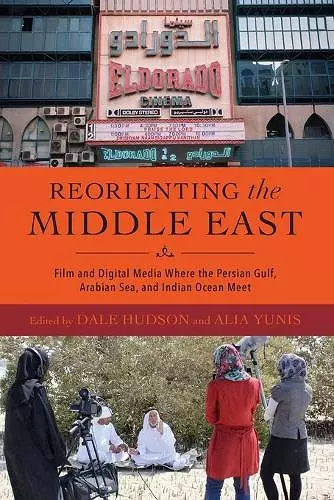Reorienting the Middle East – Film and Digital Media Where the Persian Gulf, Arabian Sea, and Indian Ocean Meet
Dale Hudson author Nelida Fuccaro author Firat Oruc author Alia Yunis author Ammar Al Attar author
Format:Paperback
Publisher:Indiana University Press
Published:5th Dec '23
Should be back in stock very soon

Stories of desert landscapes, cutting-edge production facilities, and lavish festivals often dominate narratives about film and digital media on the Arabian Peninsula. However, there is a more complicated history that reflects long-standing interconnections between the Persian Gulf, Arabian Sea, and Indian Ocean. Just as these waters are fluid spaces, so too is the flow of film and digital media between cultures in East Africa, Europe, North Africa, South Asia, Southwest Asia, and Southeast Asia.
Reorienting the Middle East examines past and contemporary aspects of film and digital media in the Gulf that might not otherwise be apparent in dominant frameworks. Contributors consider oil companies that brought film exhibition to this area in the 1930s, the first Indian film produced on the Arabian Peninsula in the late 1970s, blackness in Iranian films, the role of Western funding in reshaping stories, Dubai's emergence in global film production, uses of online platforms for performance art, the development of film festivals and cinemas, and short films made by citizens and migrants that turn a lens on racism, sexism, national identity, and other rarely discussed social issues.
Reorienting the Middle East offers new methods to analyze the often-neglected littoral spaces between nation-states and regions and to understand the role of film and digital media in shaping dialogue between area studies and film and media studies. Readers will find new pathways to rethink the limitations of dominant categories and frameworks in both fields.
"I find this collection a much needed and timely post-colonial re-mapping of film histories and cinematic practices around the Persian Gulf, aptly shifting the focus from land to water, from national borders to arenas, contact zones, from hegemonic historiography to transcultural stories and identities."—Viola Shafik, author of Arab Cinema: History and Cultural Identity
"In de-essentialising the Gulf and presenting it to us as a critical method, this collection achieves two key things: it contributes to the decolonisation of knowledge production about the Gulf, its peoples, cultures and societies and invites us, at the same time, to rethink the fields of Arab and Middle Eastern media and cultural studies beyond static, colonial configurations of geography. This wide-ranging collection recognizes the Gulf as a complex transcultural space; a conduit to relational histories and cultural encounters that transcend the limiting and teleological imaginations of nations and regions in film and area studies. This is a terrific and a much-needed book. I strongly recommend it to scholars of Middle Eastern media and cultural studies and also to those researching media practices and uses in the global South and beyond."—Tarik Sabry, author of Cultural Encounters in the Arab World: On Media the Modern and the Everyday
"A cornucopia of information and insight, Reorienting the Middle East manages to do what the title promises. It reorients discussion of Gulf Media by expanding the corpus and scope in multiple ways, first of all by counterpointing portrayals of the Gulf with portrayals from the Gulf. Rather than approach the region as a static place, it uses the Gulf as an epicentric prism to reveal the fluid movement of ideas, images and films across borders. The book treats transnationality not as a mere inventory of nation-states involvement but rather as an intricate cross-border process embedded in the transnational imaginary of and about the Gulf. Reorienting the Gul describes a constantly morphing transcultural arena of interconnected histories, migrating cultures, of uncanny resemblances, subterranean affinities. Rather than a simple binary of metropole and colony, we find palimpsestic formations where a nation can at once be indigenous, postcolonial, para-colonial and colonial in the sense of exploiting migrant labor from the Global South, in situations where multicultures intersect and interfecundate in hybrid formations. The book also addresses the various forms of transnational projections, as in the case of South-South stereotyping (Egyptian films mocking rich Gulf State Arabs, and Bollywood films portraying the Gulf as corrupting the innocent Indian nationals, Replete with intriguing surprises, the book engages such topics as entrepot film culture in Dubai, romanticized narratives about ruling families, American corporations extracting oil while injecting stereotypes and segregation into Saudi Arabia, the transoceanic aurality of love and yearning, blackness in Iran, and the filmic imagining of the lives of domestic workers. Admirably transmediatic, the book expands the corpus beyond fiction features to include documentaries, TV shows, tourism commercials, YouTube videos, and digital activist videos. It is hard to imagine the reader who would not learn from this book."—Ella Shohat and Robert Stam, authors of Unthinking Eurocentrism: Multiculturalism and the Media
ISBN: 9780253067579
Dimensions: 229mm x 152mm x 15mm
Weight: 666g
344 pages